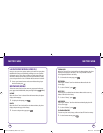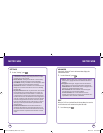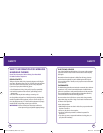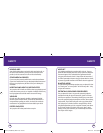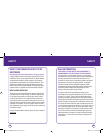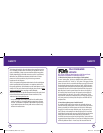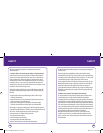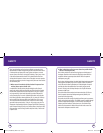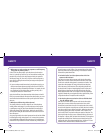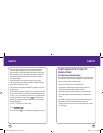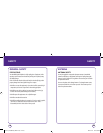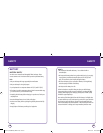
132 133
SAFETY
The highest SAR value for this model phone when tested for use at the
ear is 1.15W/Kg and when worn on the body, as described in this user
guide, is 0.393W/Kg. (Body-worn measurements differ among phone
models, depending upon available accessories and FCC requirements).
While there may be differences between the SAR levels of various
phones and at various positions, they all meet the government
requirement for safe exposure.
The FCC has granted an Equipment Authorization for this model phone
with all reported SAR levels evaluated as in compliance with the FCC
RF exposure guidelines. SAR information on this model phone is on file
with the FCC and can be found under the Display Grant section of http://
www.fcc.gov/oet/fccid after searching on O6Y-CDM1450.
Additional information on Specific Absorption Rates (SAR) can be found
on the Cellular Telecommunications & Internet Association (CTIA)
website at http://www.phonefacts.net.
*
In the United States and Canada, the SAR limit for mobile phones
used by the public is 1.6 watts/kg (W/kg) averaged over one gram
of tissue. The standard incorporates a substantial margin of safety
to give additional protection for the public and to account for any
variations in measurements.
SAFETY
FDA CONSUMER
UPDATE
U.S. Food and Drug Administration Cell Phone Facts
Consumer Information on Wireless Phones
1. What kinds of phones are the subject of this update?
The term “wireless phone” refers here to handheld wireless phones with built-in
antennas, often called “cell,” “mobile,” or “PCS” phones. These types of wireless
phones can expose the user to measurable radiofrequency energy (RF) because of
the short distance between the phone and the user’s head. These RF exposures
are limited by Federal Communications Commission safety guidelines that were
developed with the advice of FDA and other federal health and safety agencies.
When the phone is located at greater distances from the user, the exposure to
RF is drastically lower because a person's RF exposure decreases rapidly with
increasing distance from the source. The so-called "cordless phones," which
have a base unit connected to the telephone wiring in a house, typically operate
at far lower power levels, and thus produce RF exposures well within the FCC's
compliance limits.
2. Do wireless phones pose a health hazard?
The available scientific evidence does not show that any health problems are
associated with using wireless phones. There is no proof, however, that wireless
phones are absolutely safe. Wireless phones emit low levels of radiofrequency
energy (RF) in the microwave range while being used. They also emit very low
levels of RF when in the standby mode. Whereas high levels of RF can produce
health effects (by heating tissue), exposure to low level RF that does not produce
heating effects causes no known adverse health effects. Many studies of
low level RF exposures have not found any biological effects. Some studies have
suggested that some biological effects may occur, but such findings have not been
confirmed by additional research. In some cases, other researchers have had
071012_1450M-EN_REV01.indd 132-133071012_1450M-EN_REV01.indd 132-133 2007.12.17 10:21:30 AM2007.12.17 10:21:30 AM





